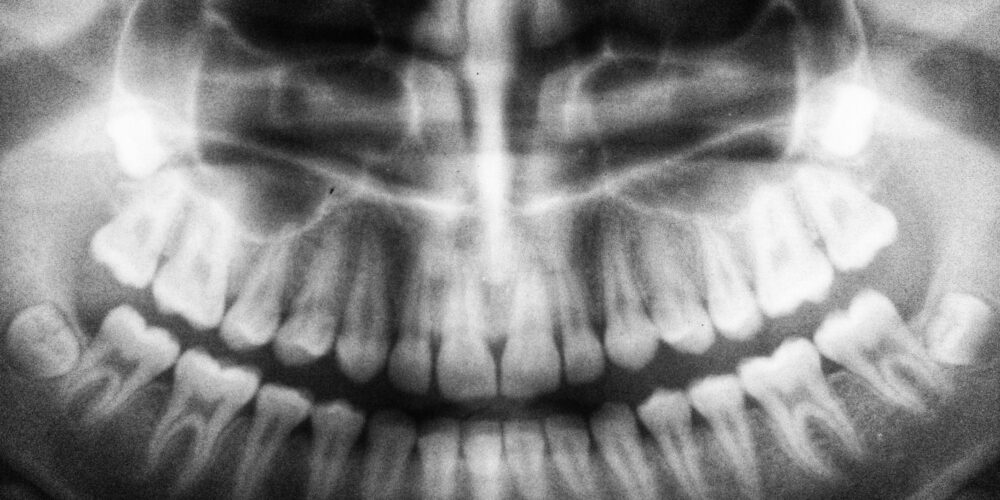
An OPG (Orthopantomogram) is a type of dental X-ray that provides a broad, panoramic view of the teeth, jaws, and surrounding structures. It’s also known as a panoramic X-ray. The OPG scan captures a single image that shows both the upper and lower teeth, as well as the jawbone, sinus areas, and temporomandibular joint (TMJ).
OPGs are commonly used by dentist professionals for:
- Assessing the alignment of teeth and jaw
- Identifying impacted teeth, such as wisdom teeth
- Detecting jawbone issues, cysts, and tumours
- Planning for orthodontic treatment or tooth extraction
The OPG X-ray is a useful diagnostic tool since it offers a wide view in one image, helping dentists make informed decisions about treatment and care.
Typically if you are a patient of Dr Young you would have had one of these, it is used before your treatment to assess the best course of orthodontic treatment. Whilst the amount of radiation in an OPG is low compared to other imaging techniques, it is still important for pregnant women to inform the dentist, as it’s generally avoided in pregnancy unless absolutely necessary.
1. How It Works:
An OPG is taken using a special X-ray machine that rotates around the patient’s head for a few seconds while capturing images from different angles. This creates a single, wide image of both the upper and lower jaws.
2. Advantages of OPG Scans:
- Wide coverage: It provides a comprehensive view of both the upper and lower jaws, including the teeth, gums, jawbone, and sinuses, all in one image.
- Non-invasive: The OPG scan is quick and comfortable. No anaesthesia or injections are required.
- Minimised radiation exposure: OPGs generally emit lower radiation compared to traditional full-mouth X-rays because it captures the entire jaw in one shot.
- Cost-effective: OPGs are often more affordable than other imaging methods like CT scans.
3. Common Uses in Dentistry:
- Orthodontic Treatment Planning: Dentists use OPGs to analyse teeth alignment and the relationship between upper and lower jaws.
- Wisdom Teeth: It’s often used to check for impacted or unerupted wisdom teeth, helping to determine if removal is necessary.
- Assessment of Bone Structure: Dentists can examine bone loss or disease in the jaw, which may be relevant for dental implants or other treatments.
- Detection of Cysts, Tumours, and Infections: OPGs help identify abnormalities like cysts, tumours, or infections in the jaw area, which can be critical for early diagnosis and treatment.
4. How the OPG X-Ray Procedure is Done:
- The patient is asked to stand or sit still while biting gently on a dental bite block.
- The OPG machine rotates around the head, taking X-ray images from different angles.
- The procedure usually takes only 30 seconds to a minute
- The procedure is painless.
